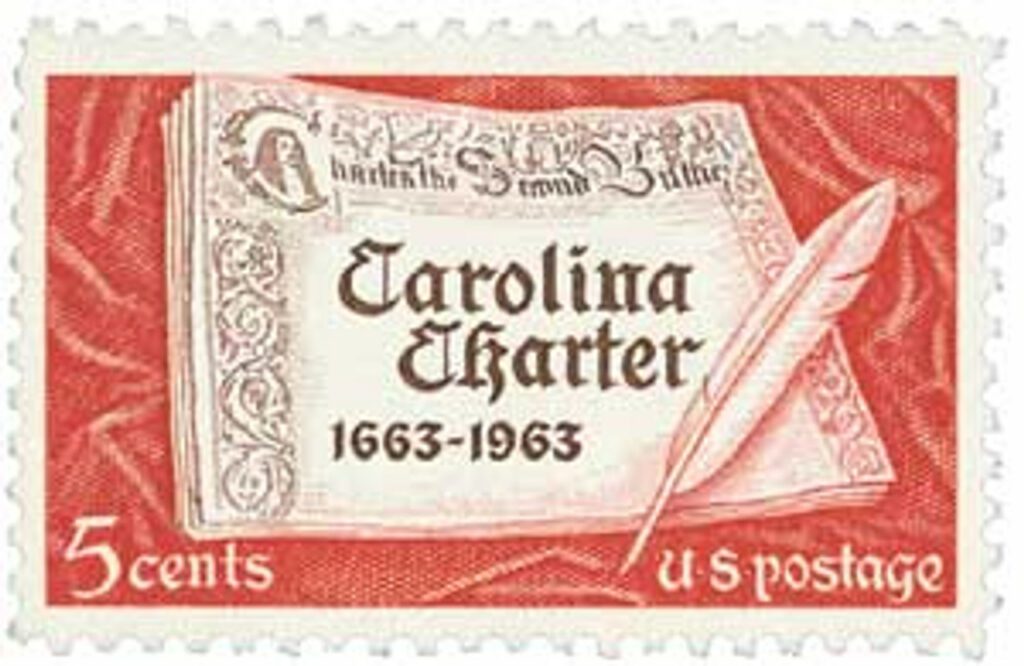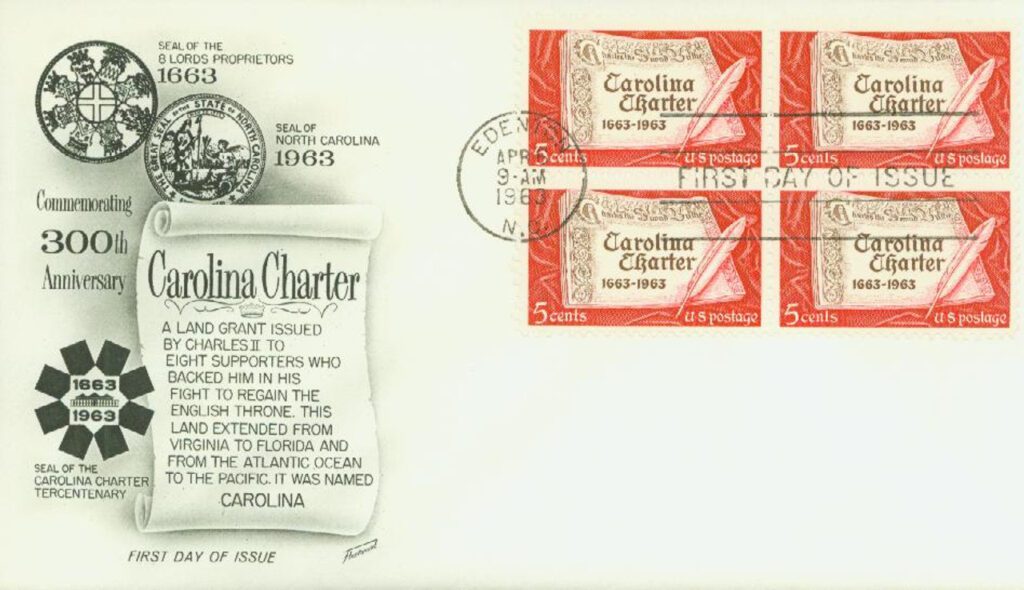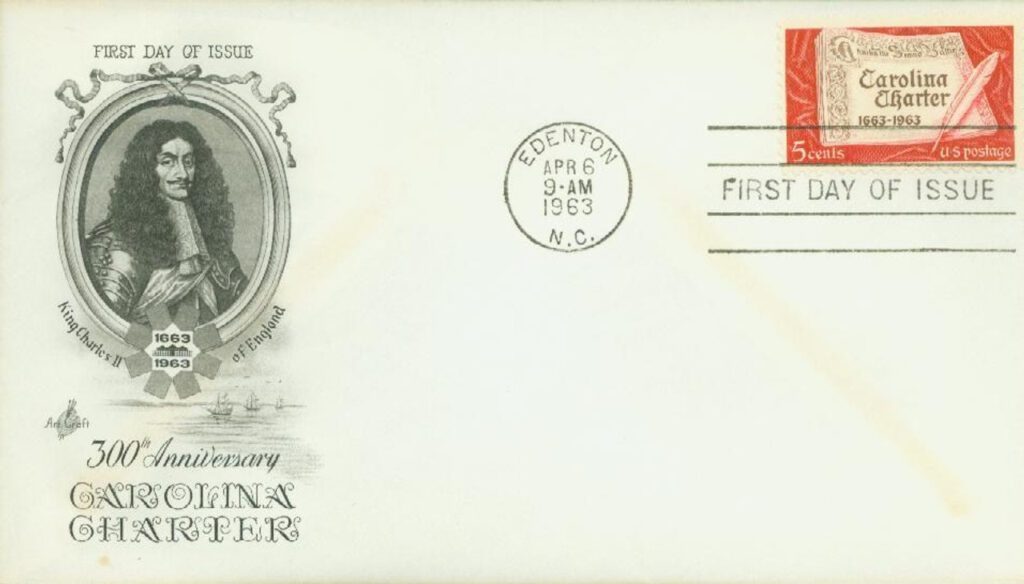On March 24, 1663, King Charles II approved the Carolina Charter, granting land in America to a group of eight Englishmen.
British attempts to settle the North Carolina area began decades earlier. In 1585, Sir Walter Raleigh established a colony at Roanoke Island – the first English colony in America. Each of his attempts at settlement failed and after his benefactor Queen Elizabeth I died, her successor refused to give him any more chances.
In the years to come, Britain experienced a major upheaval. King Charles I would be beheaded and Britain briefly became a republic before Charles’ son, Charles II, was made king. When Charles II was restored to the throne in 1660, it was a turning point in English history, as that nation was growing into the dominant world power. Yet, Charles II was badly in need of funds.
Charles also owed a great debt to his friends who had helped to reinstate the monarchy. On March 24, 1663, he issued the Carolina Charter, granting eight English noblemen the land of Carolina. The charter referred to the eight men as “the true and absolute Lords Proprietors” of Carolina. The charter permitted the men to profit from the colony and also gave them “full and absolute power… for the good and happy government of the said province.” The charter allowed the men to bestow some of their powers to “deputies, lieutenants, judges, justices, magistrates, officers and members” as they saw fit.
And while the charter gave the proprietors significant powers, it also had several provisions to prevent the abuse of power. For instance, any laws should consider the “advice, assent, and approbation of the freemen of the said province, or of the greater part of them, or of their delegates or deputies.” The charter also granted colonists all the liberties and privileges they received in England as well as religious tolerance.
In 1665, the proprietors realized that part of the land they thought was theirs under the charter wasn’t, so they requested that King Charles II grant it to them, and he obliged. With this, the colony included all the land along the coast that encompasses present-day North Carolina, South Carolina, and Georgia, as well as the northern part of Florida. It included all the lands between those lines, westward to the Pacific Ocean – although in practice that extended only to the Mississippi River, since it was unknown at the time how big the territory was.
The portion of the land that was being settled was divided into three counties: Albemarle in the north, Clarendon in the Cape Fear region, and Craven in what it now South Carolina. In 1677, some of the colonists in Albemarle, the only county with a government at that time, revolted against their governor. This revolt was named Culpeper’s Rebellion, after one of its leaders, John Culpeper. The Albemarle colonists removed five governors between 1664 and 1689. This led to reorganization of the colony. In 1712, the territory was divided into North and South Carolina, although the same group of people ran both parts.
In 1729, the crown purchased North Carolina from the Lords Proprietors, and it became a royal colony, ruled by governors appointed by the king. It would remain under that leadership until the American Revolution.
Click here to read the Carolina Charter.
| FREE printable This Day in History album pages Download a PDF of today’s article. Get a binder or other supplies to create your This Day in History album. |
Discover what else happened on This Day in History.





Thank you Mystic. I enjoy reading about the early settlement of our country.
To be fair, since Cromwell dismissed Parliament and effectively ruled England as head of the army, one could hardly call the result a “republic.” Otherwise, another wonderful piece of history.
Interesting news. Was unaware of the happenings at that time in history. Kept in m list of ‘happenings’ at that time in the history of the U.S.
Every day is a good day to be in the Carolinas. From the mountains to the ocean it’s beautiful country. I hope we can protect its natural wonders.
Wow, what a great history lesson! Thank you Mystic Stamp!
no pdf